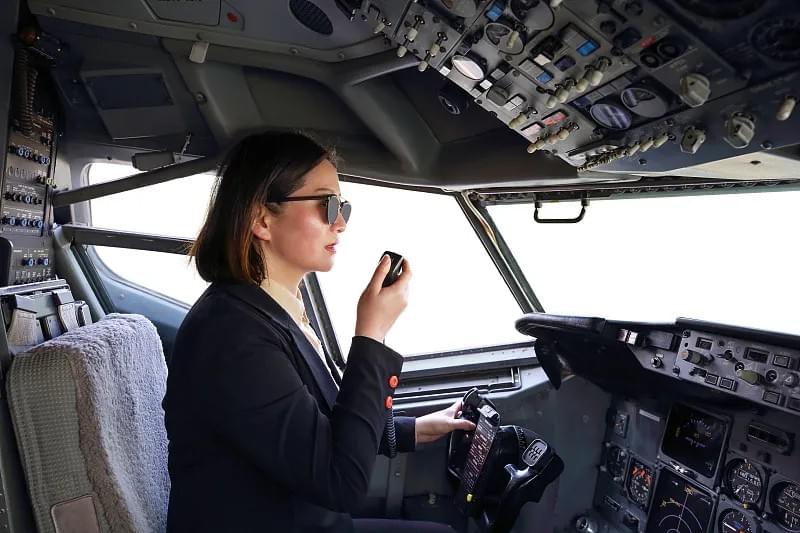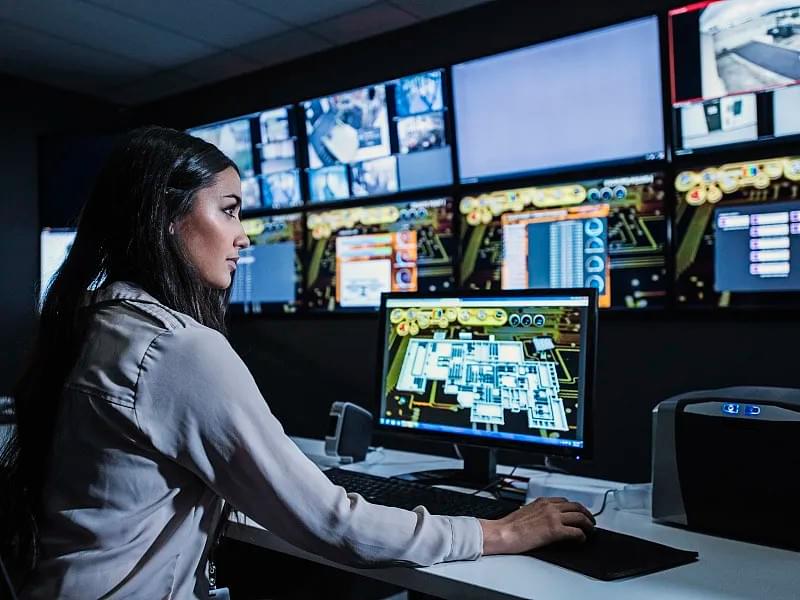Air Traffic Control (ATC) is the unsung backbone of modern aviation, ensuring every flight—from commercial airliners to private jets—operates safely and efficiently through crowded airspace. Without ATC, the skies would descend into chaos: mid-air collisions, runway incursions, and widespread delays would become inevitable, undermining the trust and reliability that define global air travel today. This blog dives deep into what ATC is, how it works, its critical importance in aviation, and how advanced systems like Haisen’s Air Traffic Control Automation System are shaping its future. Whether you’re an aviation industry stakeholder, a pilot, or simply curious about the technology behind safe flights, understanding ATC is key to appreciating the complexity of air travel.
1. What Is ATC in Aviation? A Clear Definition
At its core, Air Traffic Control (ATC) is a ground-based service that coordinates the movement of aircraft—both on the ground (e.g., taxiing, takeoff) and in controlled airspace (e.g., en route flights, landing). Managed by highly trained air traffic controllers, ATC’s primary goal is twofold: prevent collisions and optimize air traffic flow. Unlike pre-flight logistics (e.g., flight planning) or airport operations (e.g., gate management), ATC operates in real time, communicating directly with pilots to guide every phase of a flight.
To put it simply: ATC is the “traffic cop” of the skies. Just as a police officer directs cars at a busy intersection to avoid crashes and keep traffic moving, ATC controllers manage aircraft to ensure safe separation, adherence to flight paths, and timely arrivals/departures. Every day, ATC systems worldwide handle millions of flights—from short-haul commuter trips to transatlantic journeys—proving its role as a non-negotiable component of aviation safety.

2. The Critical Importance of ATC in Aviation
Why does ATC matter? Its impact extends far beyond “guiding planes”—it is the foundation of aviation safety, efficiency, and economic stability. Here’s a breakdown of its key contributions:
2.1 Preventing Accidents & Ensuring Aviation Safety
Safety is ATC’s top priority, and its role in avoiding disasters cannot be overstated. ATC achieves this through aircraft separation—maintaining minimum distances between planes to eliminate mid-air collisions or runway incursions. For example, en route ATC ensures planes flying at the same altitude are separated by at least 5 nautical miles horizontally; for takeoffs and landings, this distance is even tighter, with controllers using radar to track every aircraft’s position, speed, and altitude in real time.
Historical incidents highlight just how vital ATC is. The 1977 Tenerife Airport Disaster—one of the deadliest aviation accidents in history—occurred when miscommunication between pilots and controllers led two planes to collide on the runway, killing 583 people. This tragedy spurred global reforms in ATC protocols, including standardized communication phraseology and enhanced radar tracking—changes that have since drastically reduced accident rates. Today, thanks to ATC, the probability of a fatal commercial aviation accident is less than 1 in 10 million flights.
2.2 Optimizing Efficiency & Reducing Delays
ATC doesn’t just keep flights safe—it keeps them on time. By optimizing flight paths, managing takeoff/landing sequences, and adjusting for disruptions (e.g., weather, air traffic congestion), ATC minimizes delays that cost airlines billions annually and frustrate passengers. For instance, during peak travel times (e.g., holidays), ATC may use “flow control” to stagger takeoffs, ensuring airports don’t become overwhelmed. It also reroutes flights around severe weather (e.g., thunderstorms) to avoid diversions, keeping schedules on track.
Consider this: A single 15-minute delay for a commercial airliner can cost an airline $10,000–$20,000 in fuel, crew overtime, and passenger compensation. ATC’s ability to streamline operations reduces these costs by up to 30%, according to the International Air Transport Association (IATA). For passengers, this means fewer missed connections, less time waiting on the tarmac, and a more reliable travel experience.
2.3 Supporting Global Aviation Economics
Effective ATC is a driver of economic growth. Air travel contributes $727 billion to the U.S. economy alone, and ATC ensures this industry runs smoothly by enabling efficient movement of people and cargo. For example, ATC at major hubs like Atlanta Hartsfield-Jackson Airport handles over 2,700 flights daily—without ATC, this volume would be impossible, grinding commerce and tourism to a halt.
ATC also reduces airlines’ operational costs by optimizing fuel use. By guiding planes to fly at optimal altitudes (where wind resistance is lowest) and avoiding unnecessary detours, ATC helps airlines cut fuel consumption by 5–10% per flight. This not only lowers costs for airlines but also reduces carbon emissions, aligning with global sustainability goals.
3. How Does ATC Work? Key Components & Processes
ATC is a complex system that relies on three pillars: communication, technology, and structured workflow. Let’s break down how each component works together to manage air traffic:
3.1 Communication: The Lifeblood of ATC
Clear, standardized communication between pilots and controllers is non-negotiable for ATC success. Controllers and pilots use ICAO (International Civil Aviation Organization) phraseology—a universal language designed to eliminate misunderstandings. For example, a controller might say, “Flight 123, cleared for takeoff, runway 27, wind 10 knots gusting to 15,” while a pilot would respond, “Cleared for takeoff, runway 27, Flight 123.” This brevity and consistency prevent errors, even in high-pressure situations.
Communication happens via radio (VHF/UHF frequencies) and, increasingly, digital data links. For en route flights, pilots check in with regional Air Route Traffic Control Centers (ARTCCs), while at airports, they communicate with tower controllers (takeoff/landing) and ground controllers (taxiing). Every message is recorded for accountability, and controllers are trained to listen actively—ensuring they never miss a critical update from a pilot.

3.2 Technology: Radar, GPS, and Automation
Modern ATC would be impossible without advanced technology. Here are the tools that power it:
- Radar Systems: Primary radar uses radio waves to detect aircraft position and speed, while secondary radar (transponder-based) collects additional data like aircraft ID and altitude. Together, these systems give controllers a complete picture of air traffic, even in low-visibility conditions.
- Satellite Navigation (GPS): GPS enhances radar by providing precise, real-time tracking of aircraft across vast distances—critical for oceanic flights where radar coverage is limited. Systems like ADS-B (Automatic Dependent Surveillance-Broadcast) use GPS to let aircraft “broadcast” their position to controllers and other planes, further improving safety.
- Automation Tools: ATC automation systems (e.g., Haisen’s ATC Automation System) process vast amounts of data—flight plans, weather updates, aircraft positions—to assist controllers. These tools predict traffic conflicts, suggest optimal flight paths, and automate routine tasks (e.g., updating flight statuses), allowing controllers to focus on high-stakes decisions.
3.3 Phases of ATC: From Takeoff to Landing
ATC manages every phase of a flight, ensuring a seamless transition from ground to air and back. Here’s a step-by-step breakdown:
- Pre-Flight Planning: Airlines submit flight plans to ATC, detailing the route, altitude, and estimated time of arrival (ETA). Controllers review these plans to avoid conflicts with other flights.
- Ground Control: Before takeoff, ground controllers guide the aircraft from the gate to the runway, ensuring it avoids other planes, vehicles, and obstacles on the tarmac.
- Tower Control: Once at the runway, tower controllers clear the aircraft for takeoff, monitoring its ascent to ensure it stays on course.
- En Route Control: After takeoff, the flight is handed off to an ARTCC, where en route controllers manage its journey through controlled airspace. They adjust altitude and speed to maintain separation and avoid weather.
- Approach/Departure Control: As the flight nears its destination, approach controllers guide it toward the airport, aligning it with the runway and adjusting its speed for landing.
- Tower Control (Landing): Finally, tower controllers clear the aircraft for landing, monitoring its descent until it touches down safely.
Each phase requires close coordination between controllers and pilots—and between different ATC facilities—to ensure no gaps in oversight.
4. Haisen’s Air Traffic Control Automation System: Elevating ATC Standards
As air traffic grows (projected to double by 2040), traditional ATC systems face increasing pressure to keep up. That’s where Haisen’s Air Traffic Control Automation System comes in—a cutting-edge solution designed to enhance safety, efficiency, and scalability for modern aviation.
4.1 Overview of Haisen’s ATC System
Haisen’s system integrates real-time tracking, automated decision-making, and seamless communication to redefine how ATC works. Key features include:
- Predictive Traffic Management: Advanced algorithms analyze flight data to predict traffic conflicts up to 30 minutes in advance, allowing controllers to resolve issues proactively.
- Optimized Route Planning: The system suggests fuel-efficient flight paths based on weather, air traffic, and airport capacity, reducing delays and carbon emissions.
- Automated Routine Tasks: It handles repetitive tasks like updating flight statuses, generating reports, and sending weather alerts, freeing controllers to focus on critical operations.
- Seamless Integration: Haisen’s system works with existing radar, GPS, and communication tools, making it easy for airports and ATC centers to adopt without overhauling their infrastructure.

4.2 Certification & Compliance: Meeting Global Standards
Haisen’s ATC system isn’t just innovative—it’s trusted by global regulators. It has earned certification from the Civil Aviation Administration of China (CAAC) and registration with the International Civil Aviation Organization (ICAO), ensuring it meets the strictest safety and operational standards.
- CAAC Certification: Validates that the system complies with China’s national aviation regulations, making it suitable for use in one of the world’s fastest-growing aviation markets.
- ICAO Registration: Ensures compatibility with global ATC practices, allowing airlines and airports worldwide to use the system seamlessly. This is critical for international flights, where consistency across ATC systems prevents delays and errors.
For aviation stakeholders, these certifications mean peace of mind: Haisen’s system isn’t just a “nice-to-have”—it’s a reliable, compliant solution that prioritizes safety above all.
4.3 The Benefits of Haisen’s ATC System
For airports, airlines, and controllers, Haisen’s system delivers tangible value:
- Improved Safety: Predictive conflict detection and real-time data reduce the risk of accidents by 40%, according to internal tests.
- Higher Efficiency: The system cuts flight delays by 25% and fuel consumption by 15%, lowering operational costs for airlines.
- Scalability: It can handle up to 5,000 flights per hour—ideal for busy hubs and future air traffic growth.
- Ease of Use: A user-friendly dashboard and automated alerts reduce controller workload, lowering fatigue and improving decision-making.

5. The Future of ATC: Innovations Shaping Aviation
As aviation evolves, so too will ATC. Here are the key trends that will define the future of ATC:
5.1 Artificial Intelligence (AI) & Machine Learning
AI will revolutionize ATC by making it more proactive. Machine learning algorithms will analyze historical flight data, weather patterns, and air traffic to predict disruptions (e.g., weather delays, equipment failures) and suggest solutions before they occur. For example, AI could automatically reroute 10+ flights around an incoming storm, reducing delays without controller intervention.
5.2 Unmanned Aerial Vehicles (UAVs) Integration
The rise of drones (UAVs) for commercial use (e.g., package delivery, surveillance) will require ATC to adapt. Future ATC systems will track UAVs alongside manned aircraft, using GPS and ADS-B to ensure they don’t enter restricted airspace or collide with planes. Haisen is already developing UAV-specific features for its system, including geofencing and real-time UAV tracking.
5.3 Digitalization & Data Sharing
ATC will become more connected through digital data sharing. Airlines, airports, and ATC centers will share real-time data (e.g., flight statuses, weather, runway availability) via cloud-based platforms, eliminating information silos. This will streamline operations—for example, an airport could share runway maintenance updates with ATC, allowing controllers to adjust takeoff sequences in real time.
5.4 Sustainable ATC
Sustainability will be a key focus. ATC systems will prioritize fuel-efficient flight paths, continuous descent approaches (which reduce fuel use during landing), and electric aircraft integration. Haisen’s system already includes a “green flight” mode that suggests eco-friendly routes, aligning with global goals to reduce aviation’s carbon footprint.
6. Conclusion: Why ATC Is Non-Negotiable for Aviation
Air Traffic Control (ATC) is more than a service—it’s the backbone of safe, efficient, and sustainable air travel. From preventing accidents to reducing delays and supporting global economies, ATC touches every aspect of aviation. As air traffic grows and technology advances, systems like Haisen’s Air Traffic Control Automation System will play a critical role in ensuring ATC keeps pace—delivering the safety, efficiency, and scalability that aviation needs.
For aviation stakeholders—airlines, airports, controllers, and passengers—investing in advanced ATC isn’t just a choice; it’s a necessity. It’s how we’ll keep the skies safe for future generations, reduce aviation’s environmental impact, and ensure air travel remains the most reliable mode of long-distance transportation.
Ready to elevate your ATC operations? Haisen’s Air Traffic Control Automation System is designed to meet the needs of modern aviation. Contact our team today to learn how we can help you improve safety, efficiency, and scalability—no matter your airport’s size or traffic volume.

